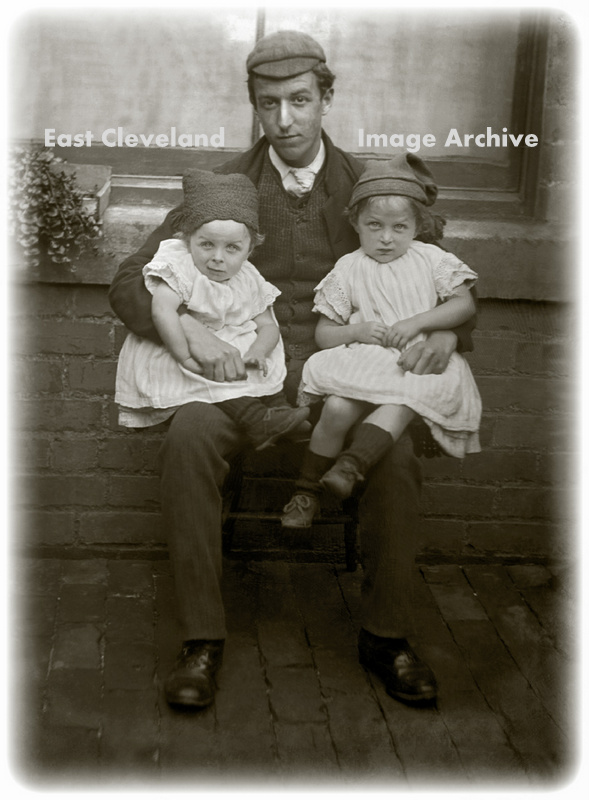
How proud he looks with presumeably his children on his knee. We are unsure as to whether it is girl and boy or two of either? Can you help?
Image kindly loaned by Michael Garbutt.
|
|
||
 How proud he looks with presumeably his children on his knee. We are unsure as to whether it is girl and boy or two of either? Can you help? Image kindly loaned by Michael Garbutt. 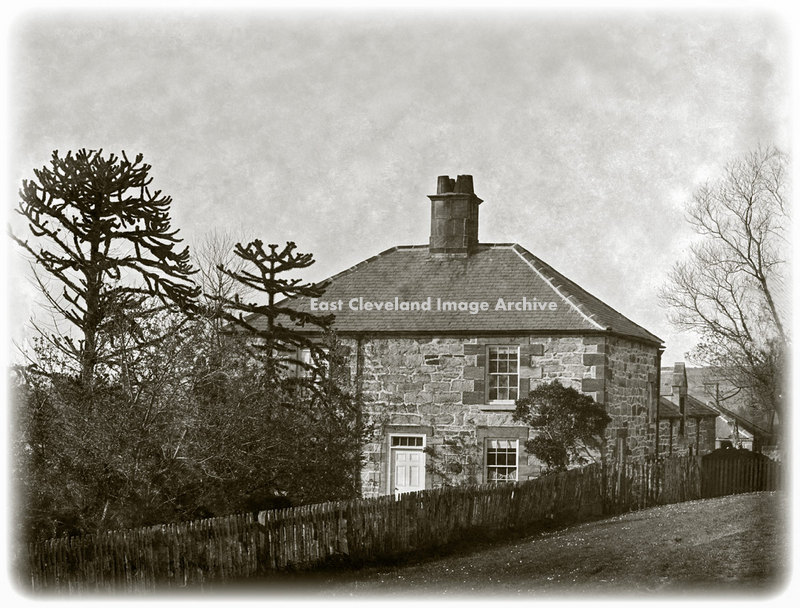 We think this house is located on Slaters Bank, but would welcome a positive identification. Image kindly loaned by Michael Garbutt. 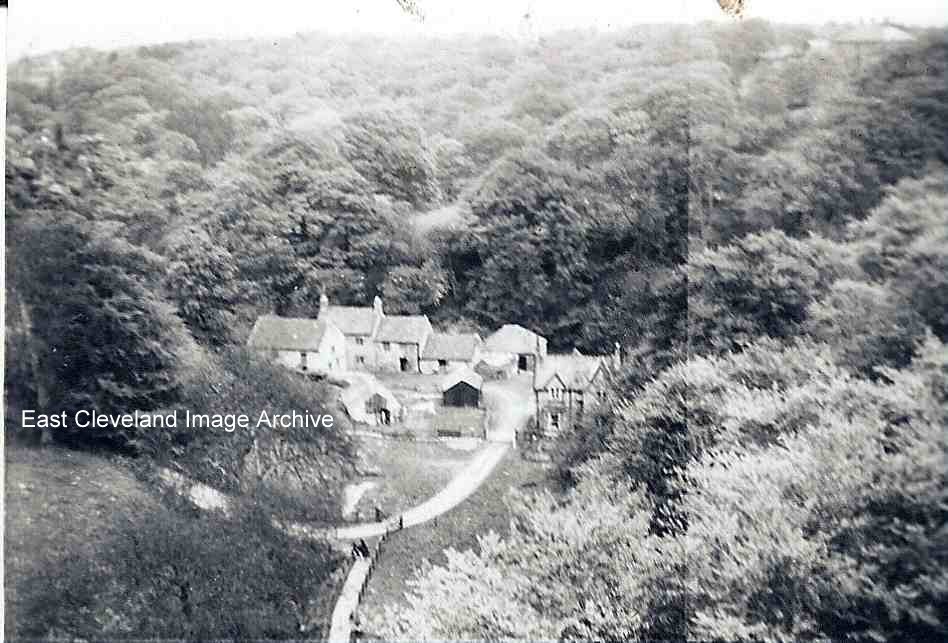 An aerial view of Marske Mill, taken from the viaduct beneath which it used to shelter. Demolished in the early 1970s, attempts have now been made to indicate the previous existence of the mill of which only small traces were evident; now to be viewed are some of the original mill walls. No evidence remains of the red brick Victorian farm-house which once graced the site. The Archive understands that the scene below was taken from a train driven over the viaduct pre 1952 by the engine driver; on a box Brownie camera. Owen Rooks assists with: “The photograph was indeed taken from the viaduct…by my father with the family box Brownie using the poor quality film that was all that seemed to be available in those days. He took it shortly before he retired in 1952 after a lifetime working on the railway, mostly on the track between Saltburn and Brotton.” Callum Duff advises: ”The house to the right of the mill was built by the railway as the Superintendent or custodian of the Viaduct’s house. It wasn’t excavated as part of the Marske Mill archaeological dig of 1986/7 because it wasn’t deemed to be of any archeological interest. I know this because I asked Cleveland County archaeologists this question when I worked for them in 1991.” Image courtesy of Owen Rooks who also kindly supplied the information, his father being the engine driver. Also thanks to Callum Duff for the update. 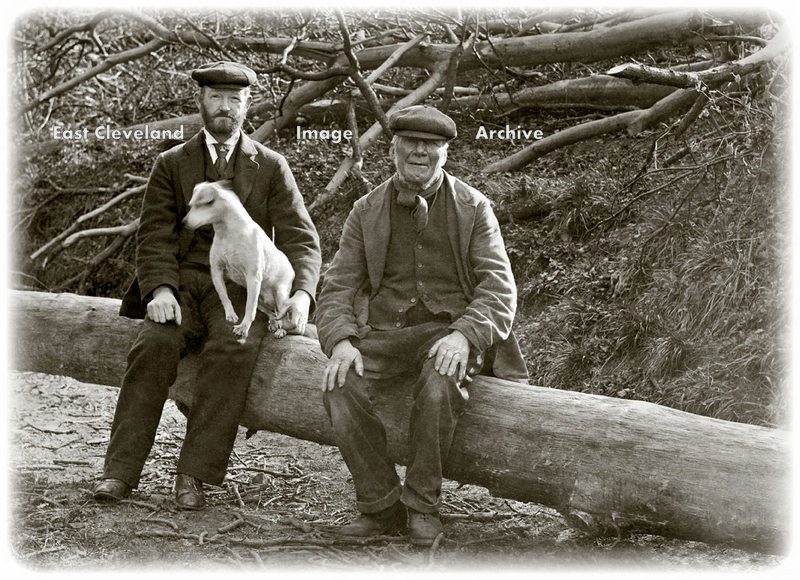 Is this a father and son scene or friends out in the wood? In ”pursuit of game?”, maybe. Any assistance in name and placing the image would be welcomed. Image courtesy of Michael Garbutt. 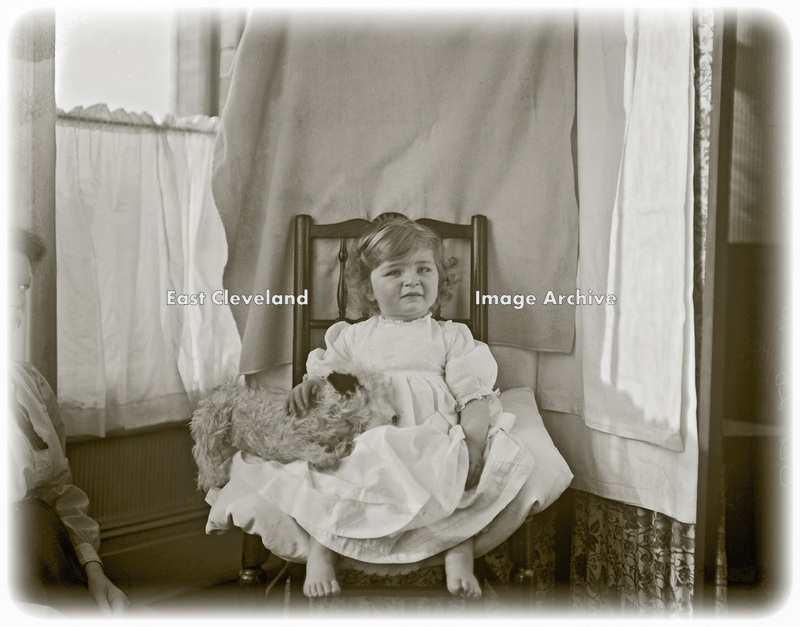 Perhaps a birthday? But agin no idea of whom, where or when. Can our viewers assist? Image kindly loaned by Michael Garbutt. 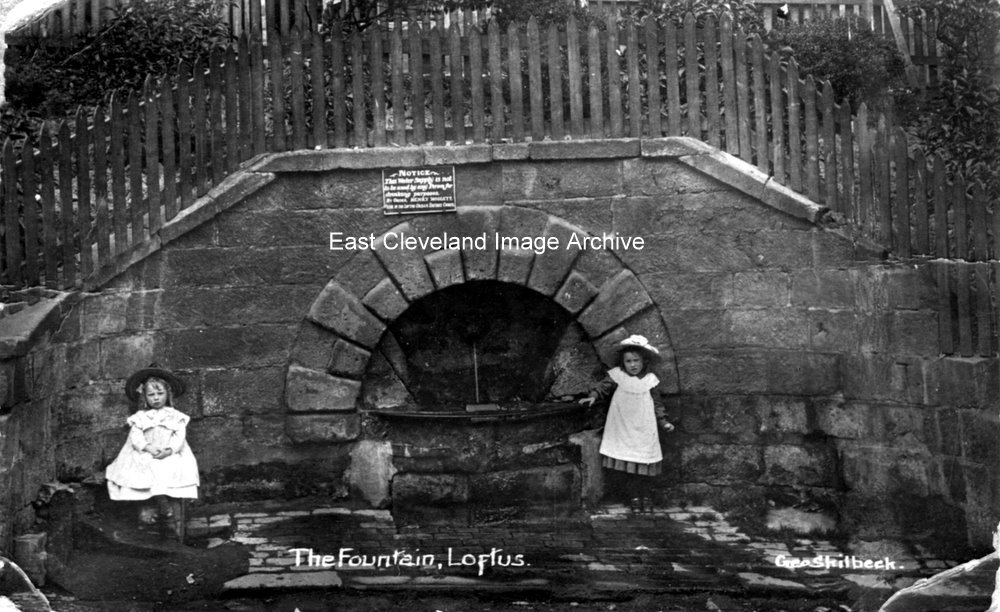 A very mysterious postcard entitled The Fountain Loftus. It predates the building of the War Memorial above it. It certainly appears dilapidated compared to the images of the unveiling in 1922. From the girls dresses a Victorian or Edwardian date is indicated. It seems when the Memorial was built the fountain underwent a complete makeover. Mary Bielby tells us: ”It is hard to tell if the War Memorial is on this picture. Notice says ”water not safe for drinking”, but used by our families in 1950s in summer when taps dried up – before Scaling Dam was ready – water looked very clean, tasted okay and we survived! Dad and several other users lived into their 90s! The children appear to be from a time when little boys were dressed in the same clothes as girls until the age of seven, later age five. Postcard published by Skilbeck Stationers in Zetland Road, Loftus (where Zetland Road Co-op now stands)”. Does anyone have information of it’s original construction and when. Image courtesy of Mary Bielby, to whom also thanks for the additional comment. 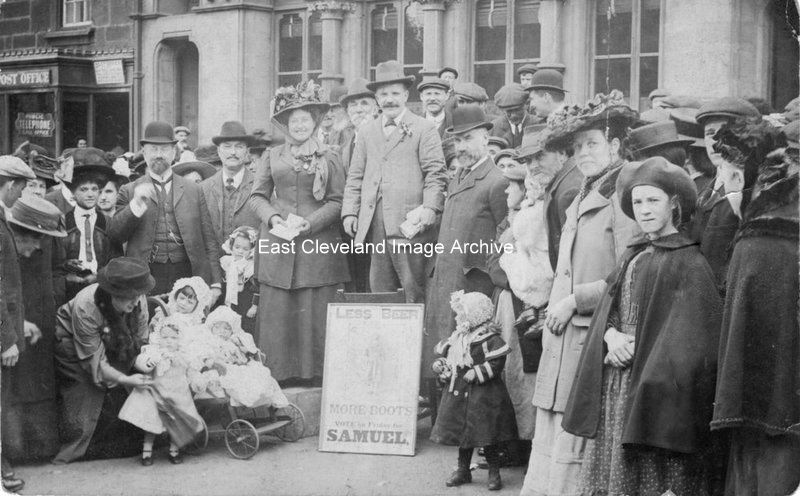 An election meeting on behalf of Herbert Samuel, Liberal candidate. Elected to Parliament in 1902, He had several posts in the Government, including Home Secretary, and Postmaster General, very appropriately standing next to Loftus Post Office. Mary Bielby tells us:”Despite popular belief Leon Brittain was not the the first Loftus MP to hold a Cabinet office, Herbert Samuel (Mr or Sir!) was about sixty or seventy years ahead of him!” Herbert Samuel was knighted in 1920; the placard proclaims ’Boots instead of Beer’, perhaps he is being supported by the Temperance Movement. Bill Danby in ”Skelton-in-Cleveland in History” tells us: ” The Labour MP, Keir Hardie made a speech at Marske in favour of a Labour candidate in Cleveland and the Miners Association held a meeting in Saltburn, but in the end no representative was put forward. This displeased many in the Independent Labour Party, one of their leaders calling Samuel a ”plutocratic Jew”, because he was an Oxford man, who had been left a lot of money by his banker father. In the end it was a 2 horse race with Herbert Samuel gaining 5.834 votes to the Conservative, Geoffrey Drage’s 3,798. Samuel retained the Cleveland seat until 1918, serving later as Postmaster General and then Home Secretary. In the following years he was High Commissioner to Palestine 1920/25 and involved in the creation of Israel, led an inquiry into the Mining Industry, leader of the Liberal Party, made a Viscount in 1937 and died at the age of 93 in 1963.” Image courtesy of Mary Bielby and many thanks for the update regarding Cabinet Ministers. Also many thanks to Bill Danby for information from the Skelton website. 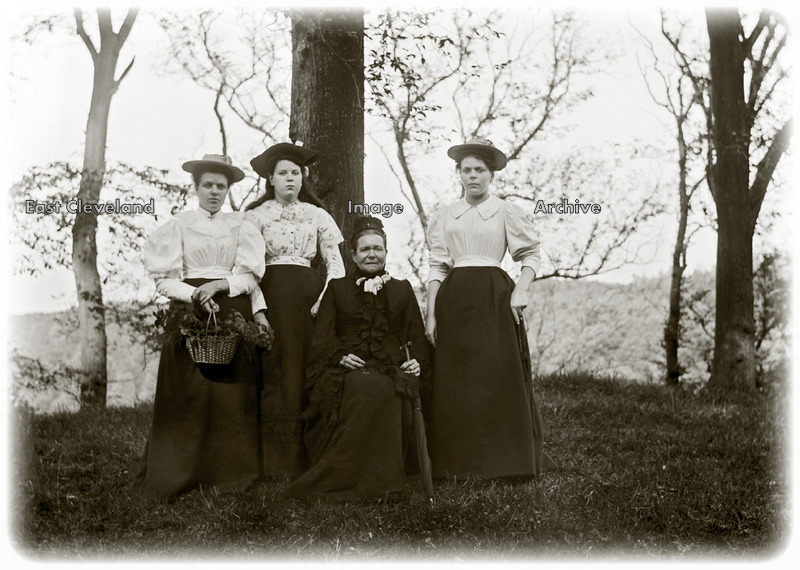 Again we have a pastoral theme to our image, but how smart they seem. Much to well dressed for a rural perambulation or even a ramble, despite the basket of vegetation so firmly grasped by one of the participants. Help with either location or those in the picture would be of assistance. Image courtesy of Michael Garbutt. 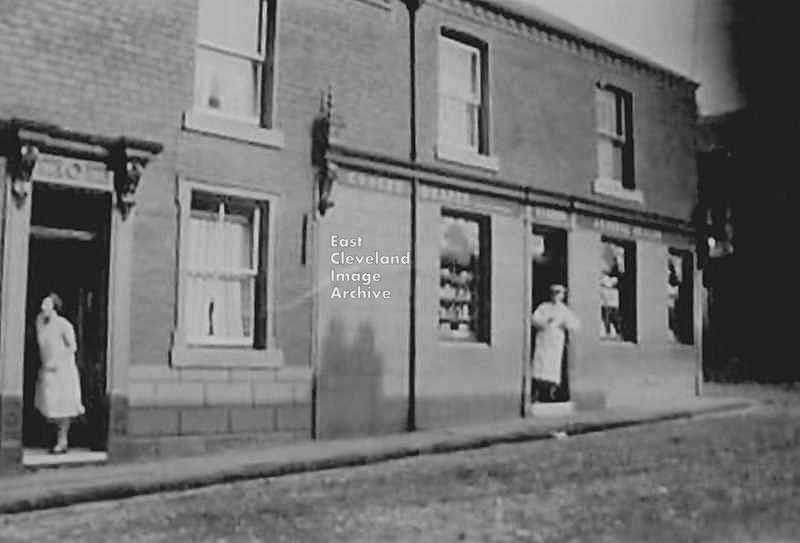 Reid’s shop, Dixon Street, Lingdale; a grocers, drapers, and general dealers with Sam Reid in the doorway. Mike Smith tells us: ”Sam Reid was the owner of the shop along with his wife Doris; I called in here on a morning on my way to school to get sweets and I also lived in this street.” Derek Dobson recalls: “I remember getting threepence for Mrs Reid’s sweets; lovely shop, lovely people.” Image courtesy of Maurice Grayson and thanks to Mike Smith and Derek Dobson for the updates.  A good image of the engine house at Lingdale mine. The round brick kiln on the right was part of an attempt to make the mine profitable, using shale from the tip (especially during slack times). It wasn’t particularly successful, but probably contributed enough to prevent total closure of the mine. Lingdale mine was one of the deepest mines in the Cleveland system and also had the poorest yield, there being a large band of shale splitting the seam in two. This resulted in the huge shale heap which took forever to dispose of! Lingdale village was described as almost derelict in the late Victorian era, the difficulty of winning the stone meaning that the mine was closed more often than in production. Image courtesy of Maurice Grayson. |
||
Recent Comments